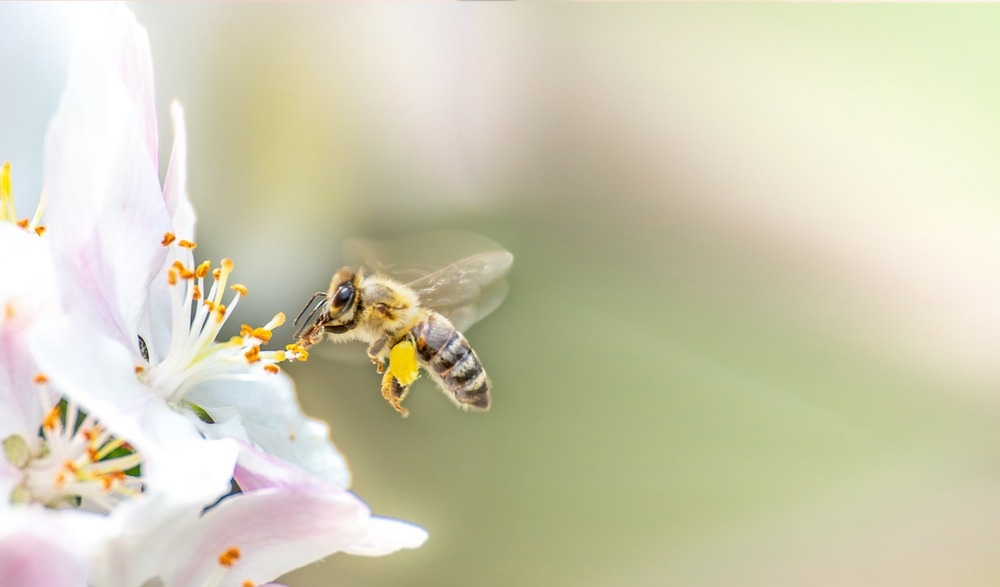In a study by Rutgers University, researchers have illustrated for the first time how many more bee species are required to preserve crop yields.

In a recently published article, researchers have stated that the biodiversity of the bee population is crucial to preserving the ecological function of crop pollination, which is essential to mankind’s food supply. The paper can be found in the journal Nature Ecology & Evolution.
“We found that biodiversity plays a key role in the stability of ecosystems over time,” said Natalie Lemanski, the study’s lead author and a postdoctoral researcher in the Department of Ecology, Evolution and Natural Resources at the Rutgers School of Environmental and Biological Sciences (SEBS). “You do actually need more bee species in order to get stable pollination services over a growing season and over years.”
The researchers concentrated on several populations of bees at numerous farms in Pennsylvania, New Jersey, and California and learned that several more bee species were not only required for pollination than anticipated over a whole flowering season but also that even more was necessary across multiple years.
The team found that diverse bee species pollinated the same plants at various times of the year. They also discovered that various bee species were the dominant pollinators on the same types of plants in diverse years.
Owing to the natural variations in bee populations, the scientists stated that all existing bee species were necessary to preserve a minimum pollination threshold during lean years.
This research shows that abundance [of a species] matters, but bee diversity matters even more. It’s not the same bees that are abundant at a given point in time, and variety is necessary to provide balance during a growing season – and from year to year.
Michelle Elekonich, Deputy Division Director, Directorate for Biological Sciences, National Science Foundation
The National Science Foundation’s Directorate for Biological Sciences provided funding for the study.
Lemanski stated that the study validates an established concept that ecologists term the “insurance hypothesis.” The concept is that ecosystems possibly gain when nature “diversifies the portfolio,” supporting numerous species of an animal or plant category, rather than depending on one main species.
We found that two to three times as many bee species were needed to meet a target level of crop pollination over the course of a growing season compared to a single date. Similarly, twice as many species were needed to provide pollination over the course of six years compared to a single year.
Natalie Lemanski, Study Lead Author and Postdoctoral Researcher, Department of Ecology, Evolution and Natural Resources, SEBS, Rutgers University
The team based their study on widespread observations of bee visits to flowers and measurements of the volume of pollen grains dropped on individual flowers over weeks and months within a particular calendar year and then over several years.
They gathered the data after getting consent from the farmers at 25 watermelon farms in Central Jersey and eastern Pennsylvania, at 16 blueberry farms in South Jersey, and 36 watermelon farms in California’s Northern Central Valley.
The magnitude of increase in species needed over multiple years was remarkably consistent among crop systems when considered over the same interval of time. In addition, the fact that the relationship between timescale and the number of species needed did not level off suggests that even longer time series, spanning multiple seasons, may further bolster the need for biodiversity to ensure reliable ecosystem service.
Natalie Lemanski, Study Lead Author and Postdoctoral Researcher, Department of Ecology, Evolution and Natural Resources, SEBS, Rutgers University
Rachael Winfree, a professor in the Rutgers Department of Ecology, Evolution, and Natural Resources at SEBS, was the study’s senior author, which was also written in partnership with Neal Williams of the University of California-Davis.
The study received funding from the National Science Foundation (NSF), the U.S. Department of Agriculture, the Agriculture and Food Research Initiative, and the National Institute of Food and Agriculture.
Journal Reference:
Lemanski, N. J., et al. (2022) Greater bee diversity is needed to maintain crop pollination over time. Nature Ecology & Evolution. doi.org/10.1038/s41559-022-01847-3.